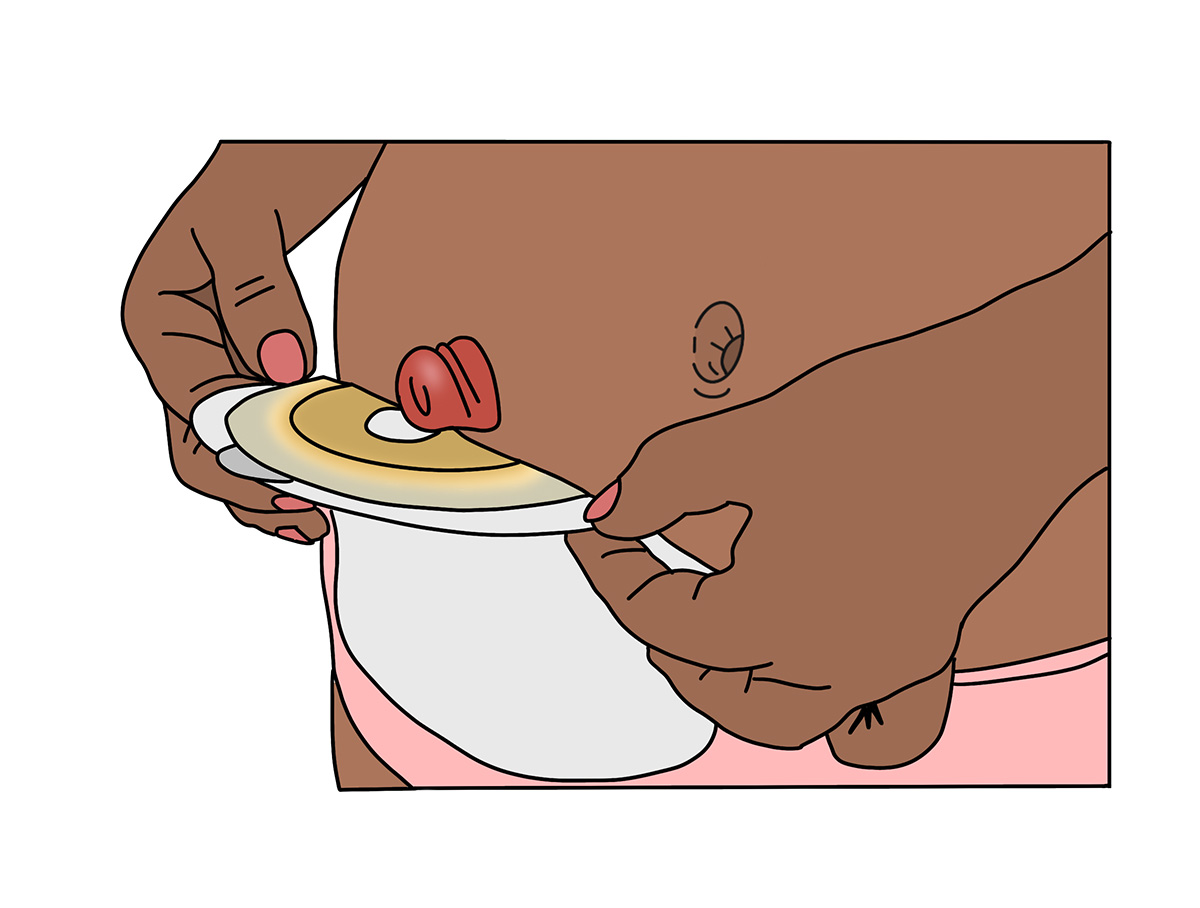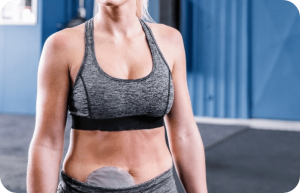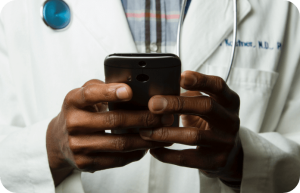Mental Health and Wellbeing
Researching The Lives of Young People with an Ostomy

Research Contributor
Poppy Budworth is a Research Fellow who carried out research with young people in the UK, to find out more about their everyday life with a stoma. Her work focuses on sharing the experiences of young Ostomates, and learning about their daily lives, identities and relationships. Her work led to the creation of two digital toolkits to help young people navigate life with a new stoma. In this article, Poppy shares her research and insights.
Introduction to my research
In the Autumn of 2020, I started my PhD research at The University of Manchester, focused on learning about the lives of young people aged between 19 and 33 with an ileostomy or colostomy (also known as an ostomy or a stoma). I worked with fourteen young people who primarily lived in the UK, and who either lived with an ostomy at the time of the research or had so previously.

An ileostomy is formed from the small intestine, and a colostomy from the large intestine. Both ileostomy and colostomy surgery brings a portion of the bowel outside of the body, where a person then wears a medical bag which collects poo. This bag is stuck on with adhesive. You can learn more about life with a stoma by clicking here which takes you to Bladder and Bowel Community’s ‘Stoma Hub’.
My research was in partnership with GetYourBellyOut, a patient-led organisation who support, educate, and advocate for people living with Inflammatory Bowel Disease (IBD). IBD is a leading reason for ostomy surgery amongst young people in the UK. We agreed that prioritising participant choice and voice throughout the research would be key to its success.
As well as the need for research with young people living with an ostomy – to destigmatise bowel illness as an ‘older person’s’ experience – I also had personal reasons for taking such an interest in this topic, and very much care about young people living with long-term illness getting the support and treatment they need and deserve. The next section outlines some of the key aims of this research project.
What were the aims of my research?
The main aim of my research was to explore the everyday experiences of young people living with an ileostomy or colostomy, primarily in the UK. I wanted to answer four main questions which would allow me to understand how being a young person with an ostomy shaped different parts of their lives.
The four questions were around:
- how young people living with an ostomy experience time
- their relationships and encounters with others
- their youth identities; and
- the best ways to research with young people living with a chronic illness.
My approach to research forms the focus of the next part of this blog.
Researching with care
I often describe the approach I took to researching with young people with an ostomy as ‘care-full’ and ‘flexible’. I use these words as it encapsulates the way that participants’ choice, comforts and capacities were prioritised throughout the study.
Participants made choices about what their involvement looked like – loosely described as interviews and diaries – so that they fit around their lives and bodies. The diaries participants kept were similar in that they could make choices about what kind of diary suited them. They could choose to keep their diary for one day, or for a few a weeks, they could type, handwrite, audio or video record, and/or use photographs for their diaries. Encouraging people to make choices about their involvement resulted in very rich data, as participants shared personal stories about life with an ostomy. What follows is a summary of these findings about life as a young person with an ostomy.
Key findings
Some of the key findings that came out of my research were centred on participants’ experiences of time, relationships, and negotiating their youth identities. In terms of time, my research found that young people living with an ostomy experienced and felt time differently. For example, some needed extra time to do everyday things, some had to re-think their lives and futures to fit around their diagnosis and symptoms.
Participants also shared their experiences with different people and in all kinds of relationships – with romantic and intimate partners, friendships, colleagues, strangers – as well as how objects and things (including digital devices like mobile phones) significantly shaped their encounters. For example, many of the young people involved in the research shared that the physical side of intimate relationships had not changed for them, but that it took some extra time to build their confidence after ostomy surgery.

My research also found that young people living with an ostomy thought differently about what it means to be a young person in today’s society. For example, what does a young person look like, what do young bodies do and feel like, where do young people go and hang out, what are their relationships like? This was a significant finding as it showed how ideas of ‘normal’ often don’t account for people’s diverse lives and bodies; especially young disabled and chronically ill people.
In addition to asking people to share their experiences, I also asked participants to offer tips and advice for people with a newly formed stoma, as well as for the people who support them. With this advice, I was able to make two digital toolkits.
Digital toolkits
This year I co-created two collaborative toolkits titled, ‘What I wish I knew’ and ‘What I wish YOU knew’ about life with an ostomy. The digital toolkits were made in collaboration with GetYourBellyOut, and with digital artist – Lucy Harman – who lives with a long-term bowel illness herself. Lucy illustrated the images in this blog post, including the one below of a hand holding a radar key and a ‘Just Can’t Wait!’ card (both of which I discuss in more detail below).
The two toolkits contain tips and advice for people with a newly formed ostomy, and the people who support them: for example, friends, family members, romantic partners, colleagues, healthcare professionals and even strangers.
These toolkits were designed based on participants’ interviews and diaries, and the tips and advice they would give people with a newly formed stoma. Participants also provided feedback on earlier drafts of the toolkits, ensuring the language and imagery felt appropriate and effective for the target audience.
One top tip in the toolkits is about carrying items to help make access to everyday spaces, like shared and public toilets, easier for people with bowel (and bladder!) related illnesses. One of the items participants recommended carrying was a ‘Just Can’t Wait!’ card, which is designed and supplied by Bladder & Bowel Community.
To find out more and order a FREE Just Can’t Wait! card, click here.

Additional items that participants recommended people with an ostomy carry included radar keys, which provide access to over 10,000 public toilets across the UK, as well as spare supplies (and clothes!) in case of an accident or if needing to change their bag.
Other tips in the toolkits focus on advice to new people with an ostomy about how to change their bag and highlight the importance of language choice (for example, by healthcare professionals) when talking about life with an ostomy. One participant made clear that living with an ostomy is not a “worst case scenario” (as illustrated by Lucy) – despite encountering this phrasing in healthcare settings and beyond – as this surgery enabled her to do things she enjoyed, such as working and socialising with friends.
To find out more and to download a copy of these toolkits for FREE, please click here. These toolkits are helpful for people with newly formed stomas, their loved ones, and other people who support them (like stoma nurses, educators, and/or colleagues). The link takes you to GetYourBellyOut’s website, where you can learn more about their brilliant work.
What’s next?
I am excited to have started a Fellowship at University of Liverpool this autumn, which is focused on expanding the reach and impact of my research findings and resources, and to make connections with organisations who support young people with bowel related illnesses.
In Spring 2026, I am running creative workshops which build on the ‘What I wish I/YOU knew’ digital toolkits, offering in-person, online, and asynchronous ways to be involved. If you are a disabled activist or work for an organisation which supports young people with chronically illness and want to be part of one of these workshops, please get in contact with me.
Thank you to Bladder & Bowel Community for allowing me to share some highlights from my research in this blog. If you’d like to get in contact, or if you have any questions, please email me at [email protected].
Author: Dr Poppy Budworth
Author Bio: Poppy is a Research Fellow at the University of Liverpool. Her research explores the everyday lives of young people with an ileostomy or colostomy. Poppy has worked closely with GetYourBellyOut, an organisation which supports people living with Inflammatory Bowel Disease.





